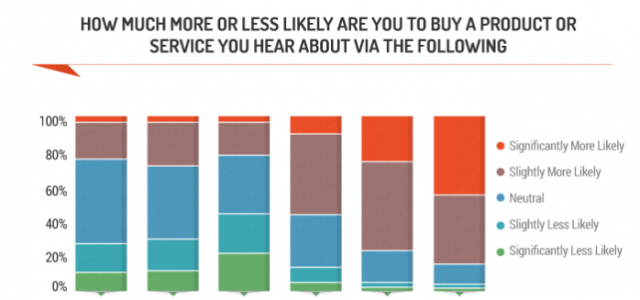I sat down with Michelle Ransom this past week for the second in a series of conversations with a Change Management Executive from the Watershed CI team. I think that you’ll find the insights and personal thoughts from Michelle, on the subject of Change Management, to be both thought provoking and enlightening.
So, with cup of coffee in hand and a break in Michelle’s very busy schedule, it is once again my pleasure to present to you an excerpt from our conversation.
PGG: Michelle, first and foremost, thank you very much for taking the time to sit with me;
I know that the audience is equally appreciative of the opportunity to hear from someone like yourself who, as a seasoned Change Practitioner, has experienced all kinds of situations in your efforts to help numerous clients with their transformational initiatives. Can I start by asking you: Why do organizations tend to resist change?
MR: I’m not convinced they do. In fact, this phrasing of “resisting change” has inadvertently set up the expectation of resistance and conflict, with the potential of creating a negative self-fulfilling prophecy. People do not resist change, they resist being changed. If people resisted change, I’m not sure that Apple would have sold quite so many gadgets, do you?
PGG: I must say Michelle, I love your spin on that question, and there’s lots of experiential evidence available that supports your point. I’m personally a believer that people, in fact, support the change they help to create, and I agree with you on your Apple analogy. Moving on, I think that many organizations are slow to buy in on the need for change, and I’m wondering what your thoughts are on: How you sell change to an organization?
MR: Let’s back up a step. Organizations are simply groups of people, small or large, right? We should think about participating in change, rather than selling change. How about we ask just one person at a time to make a change – for example, about breakfast. What if we ask someone to change from eating cereal in the morning, to eating toast? What would be the first thing you’d say?
Yes, you’re right. We would start with “why” a la Simon Sinek, and explain our rationale. We then would invite two-way communication – asking what the person thinks and feels about this proposed change, and respond to their perspective and insights. If we don’t ask, we won’t be able to co-create the best way forward, in concert with the people we are inviting to the change. Yes, some change will be mandatory – even then, we know that we get the best results when engaging others with respect and participation. We can make change stick when we see ourselves as partners with shared accountability for change.
PGG: I love that you referenced my most favourite TED Talk with Simon Sinek, and I appreciate the detailed response. I’m a huge fan of Simon, as well as partnering and collaboration as a way to achieve great results. If I may, I’d like to stay on the subject of engaging and communicating with people by asking you: How do you ensure that all stakeholders are informed at each step of the change management process?
MR: We can’t. Here’s where we really learn that “you can lead a horse to water but you cannot make them drink”. The good news is there are at least three things we can do:
a) We can identify stakeholders who are impacted or who can impact our project;
b) We can build structures for these groups to have meaningful two-way communication;
c) We can be clear about what the anticipated impacts are for each stakeholder, as best we can.
I’ve seen successful cooperation and knowledge-sharing on social media platforms (e.g. Yammer), with newsletters/blog/podcasts, town hall meetings, steering committee meetings, webinars and interactive workshops. I’m sure there are more ways that have been successful for others. It comes back to communicating shared accountability for change, encouraging people to seek out what they need to learn about the future state, letting the change team know if they need anything more to be ready – and feel ready.
PGG: Thanks for that Michelle, and it’s clear that Communicate, Communicate, Communicate, sits as soundly in your approach as it does with that of your peer, Dana Bellman, whom I had the pleasure of speaking with two weeks ago. It’s great to witness the alignment around this subject matter. Now, I won’t keep you much longer as I know that you need to run, and so my final question is: How do you ensure that a change is transparent fully across an organization?
MR: I smell an assumption here. We need to confirm that transparency is a value that the organization’s leaders have for the change initiative. If yes, then we need to start with the leaders demonstrating, through their own communication and behavior, that transparency is the expected and desired way of communicating. Leaders need to make it safe for others to be transparent without fear.
I might suggest here: “Be careful what you wish for”, in that transparency may not serve the initiative. There are many good reasons that a change initiative might be measured and cautious with communications. It may serve to be “transparent” AND private at the same time. We can be open and transparent about the process of making business decisions, without having to know the final answers and the final impacts. Sometimes we shouldn’t see how the sausage is made – it can create confusion, uncertainty, and many requests to change the recipe. Although it opens us up to the criticism of “not being transparent”, it can be wise to wait for key decisions to be made collaboratively with the critical stakeholders. We can then calmly help people (from all stakeholder groups) to get ready for the change when we know what we’re dealing with.
PGG: Well I must say that wasn’t quite what I was expecting, but nevertheless a point very well made, Michelle. I, for one, thoroughly appreciated your response, as I’m sure that there are many of our audience who would line up with you too. Thanks very much for your time Michelle and for a most enjoyable conversation.
Michelle is currently engaged with one of Canada’s largest power companies, working on building out the Strategic Change Management Plan, where I’m positive some of the points made by her in this interview will be of real value.
Article by channel:
Everything you need to know about Digital Transformation
The best articles, news and events direct to your inbox
Read more articles tagged: Change & Transformation, Featured, Leadership







